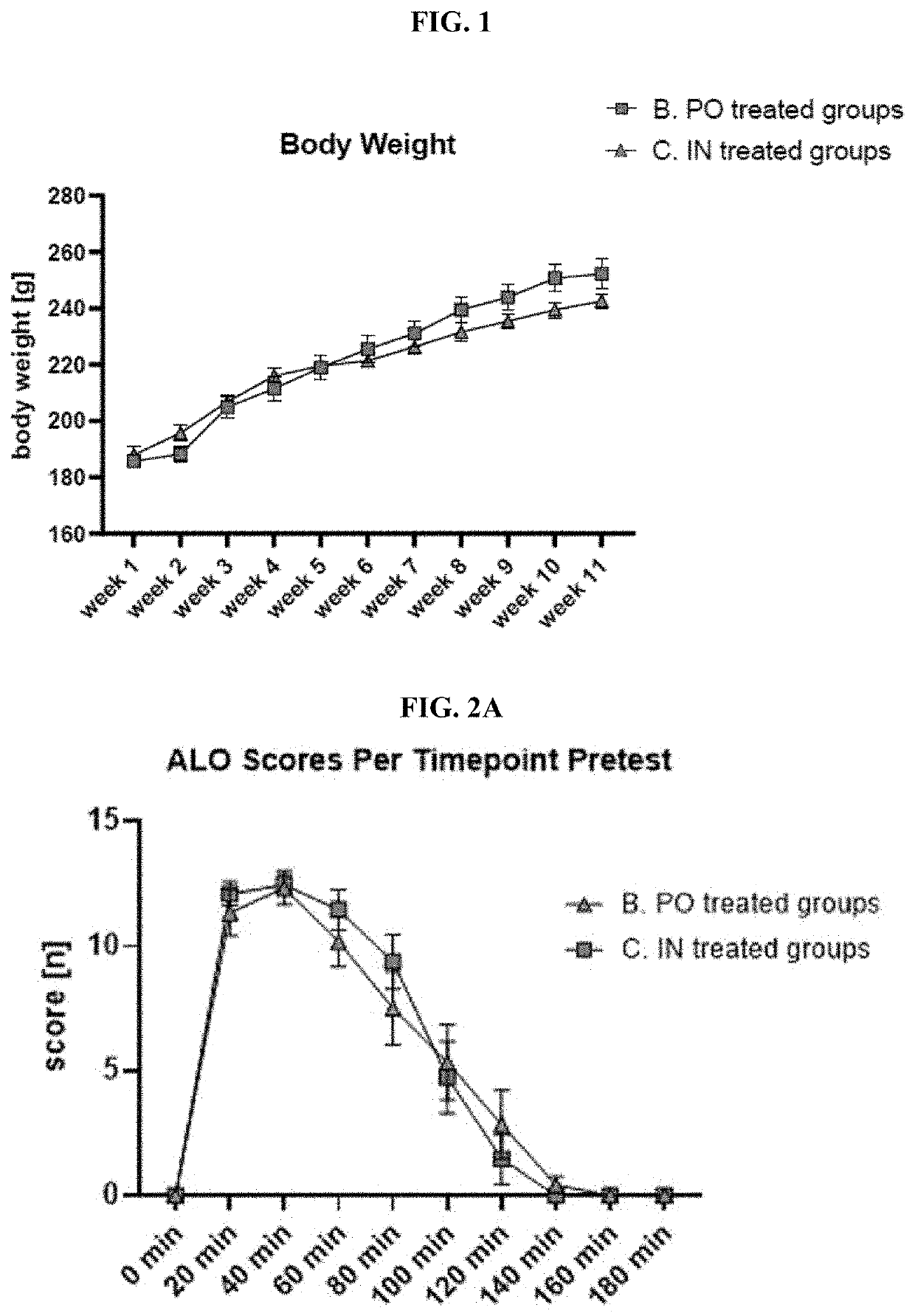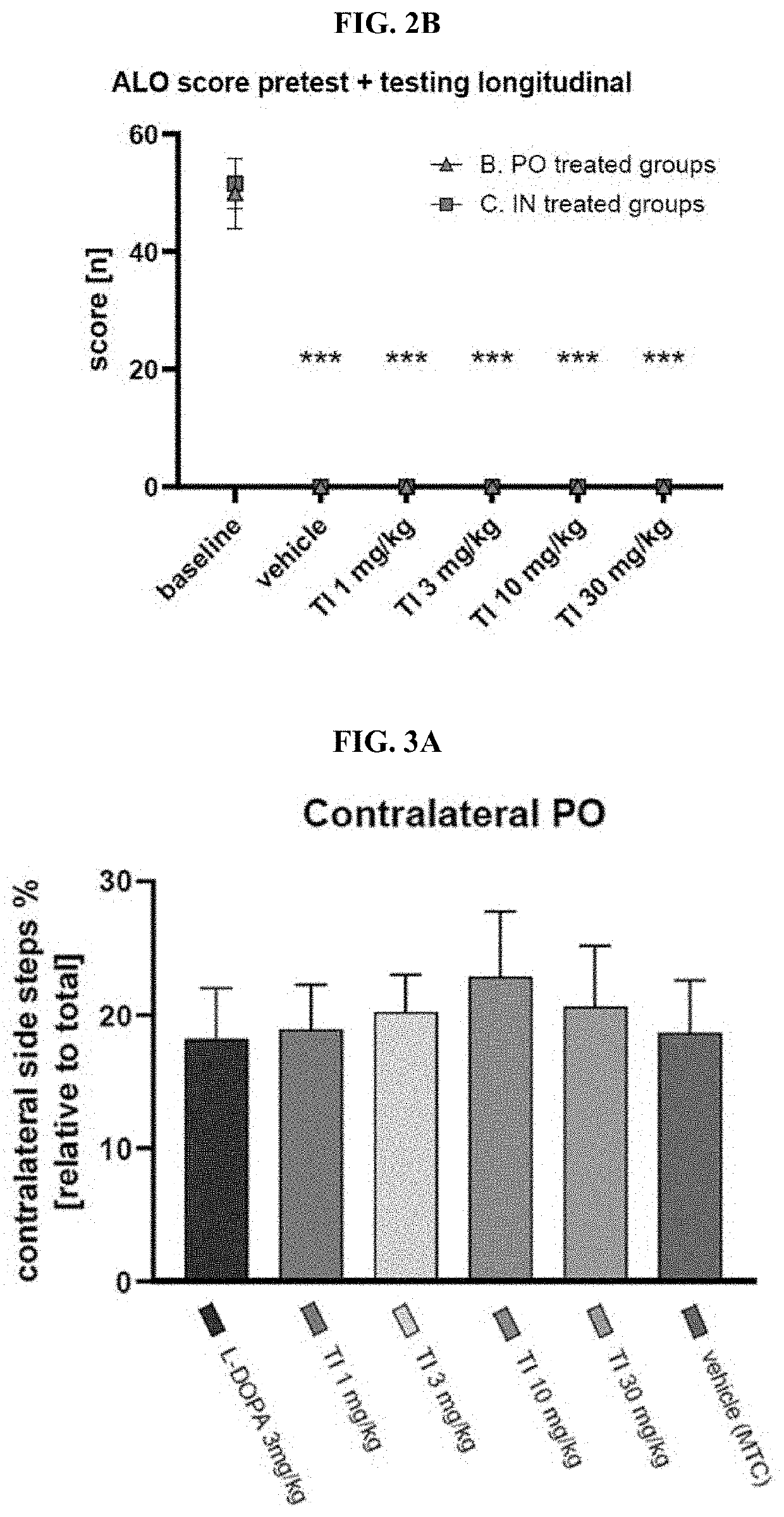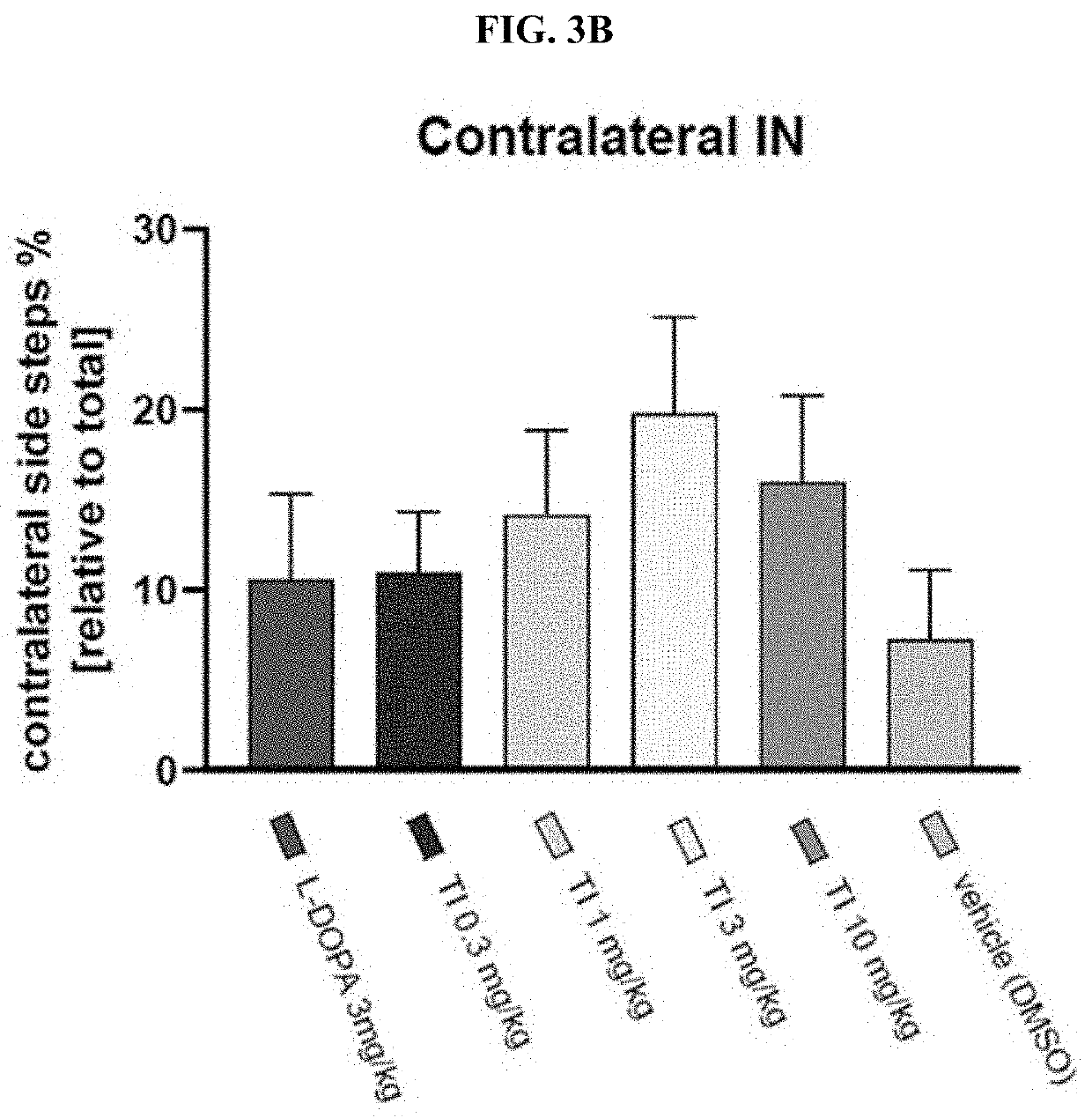Prevention and/or treatment of CNS disorders
a technology for cns and disorders, applied in the field of prevention and/or treatment of cns disorders, can solve problems such as patients who do not benefit from the efficacy of such inhibitors
- Summary
- Abstract
- Description
- Claims
- Application Information
AI Technical Summary
Benefits of technology
Problems solved by technology
Method used
Image
Examples
example 1
on of Compounds
[0223]The compounds of this disclosure are produced by adapting well known chemical conversions in accordance with the method illustrated by Scheme 1 or 2 below. The synthesis of several exemplary compounds of Table 1 is described below in examples 1.1 to 1.33. Several other compounds of Table 1 were prepared by adapting the methods described herein and assessed according to the biological assays described in Example 2.
Exemplary synthetic methods for Scheme 1 are described in detail below.
[0224]To describe in more detail by referring to the aforementioned scheme 1, it is possible to produce the compound indicated by the aforementioned scheme 1 through a series of processes that includes the first stage in which the A-2 compound is dissolved in a solvent of tetrahydrofuran and H2O, and in which the compound of scheme A-3 is produced by subjecting the solution to chain reaction with hydrazine monohydrate for 24 hours at 25° C. to 60° C., the second stage in which the A-...
example 1.1
of 3-(6-amino-1-(4-aminobenzyl)-1H-pyrazolo[3,4-d]pyrimidine-4-yl) benzonitrile (Compound 201)
1.1.1. Production of 4-chloro-(4-nitrobenzyl)-1H-pyrazolo[3,4-d]pyrimidine-6-amine
[0225]
Reagents and Conditions: (a) hydrazine, TEA, THF:H2O (3:1), r.t. to 50° C., 3 h, quant; (b) 4-nitrobenzyl bromide, K2CO3, DMF, 0° C. to r.t., 12 h, 58%.
Stage 1: Production of 4-chloro-1H-pyrazolo[3,4-d]pyrimidine-6-amine
[0226]2-amino-4,6-dichloropyrimidine-5-carbaldehyde (51, 4 g, 20.83 mmol) was melted in a solvent of tetrahydrofuran (THF) and H2O, and to this hydrazine monohydrate (0.78 ml, 24.99 mmol) and triethylamine (TEA, 3.51 ml, 24.99 mmol) were added. Afterwards, the aforementioned reaction mixture was heated at 50° C. and agitated for 3 hours, and concentrated. Then, the aforementioned concentrate was cleaned and distilled with distilled water to obtain an intermediate compound (S2, 3.45 g, 100%). 1H-NMR (DMSO-d6, 400 MHz): δ 13.25 (s, 1H), 8.02 (s, 1H), 7.14 (s, 2H).
Stage 2: Production of 4-ch...
example 1.2
of 3-(6-amino-1-(4-aminobenzyl)-1H-pyrazolo[3,4-d]pyrimidine-4-yl)-2-methylbenzonitrile (Compound 205)
[0231]
Reagents and Conditions: (a) 2-methyl-3-(4,4,5,5-tetramethyl-1,3,2-dioxaborolan-2-yl)benzonitrile, Pd(PPh3)4, Na2CO3, dioxane:H2O (8:1), r.t. to 105° C., 12 h, 81%; (b) SnCl2.2H2O, conc HCl, EtOH, r.t. to 50° C., 3 h, 74%.
Stage 1: Production of 3-(6-amino-1-(4-nitrobenzyl)-1H-pyrazolo[3,4-d]pyrimidine-4-yl)-2-methylbenzonitrile
[0232]In stage 1 of the aforementioned example 1.1.2, except for using 2-methyl-3-(4,4,5,5-tetramethyl-1,3,2-dioxiborolan-2-yl) benzonitrile (120 mg, 0.49 mmol) instead of 3-(4,4,5,5-tetramethyl-1,3,2-dioxaborolane-2-yl) benzonitrile (1.12 g, 4.92 mmol), the same process as stage 1 of the aforementioned example 1.1.2 was carried out to obtain an intermediate compound (S5, 103 mg, 81%). 1H-NMR (DMSO-d6, 400 MHz): δ 8.21 (d, 2H), 7.97 (d, 1H), 7.90 (s, 1H), 7.82 (d, 1H), 7.56 (t, 1H), 7.46 (d, 2H), 7.13 (s, 2H), 5.59 (s, 2H), 2.52 (s, 3H)
Stage 2: Productio...
PUM
| Property | Measurement | Unit |
|---|---|---|
| body weight | aaaaa | aaaaa |
| body weight | aaaaa | aaaaa |
| body weight | aaaaa | aaaaa |
Abstract
Description
Claims
Application Information
 Login to View More
Login to View More - R&D
- Intellectual Property
- Life Sciences
- Materials
- Tech Scout
- Unparalleled Data Quality
- Higher Quality Content
- 60% Fewer Hallucinations
Browse by: Latest US Patents, China's latest patents, Technical Efficacy Thesaurus, Application Domain, Technology Topic, Popular Technical Reports.
© 2025 PatSnap. All rights reserved.Legal|Privacy policy|Modern Slavery Act Transparency Statement|Sitemap|About US| Contact US: help@patsnap.com



